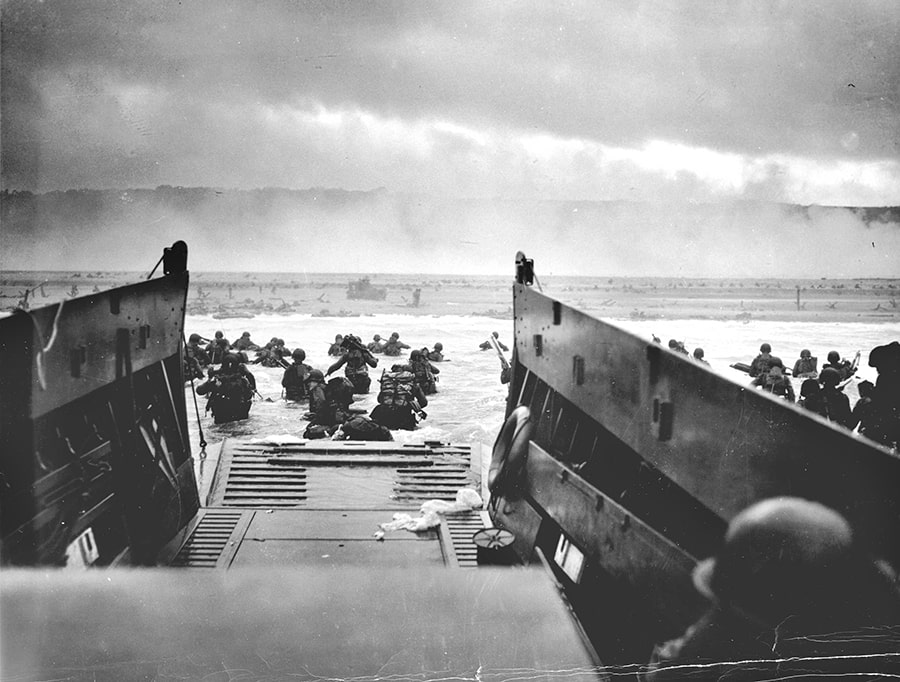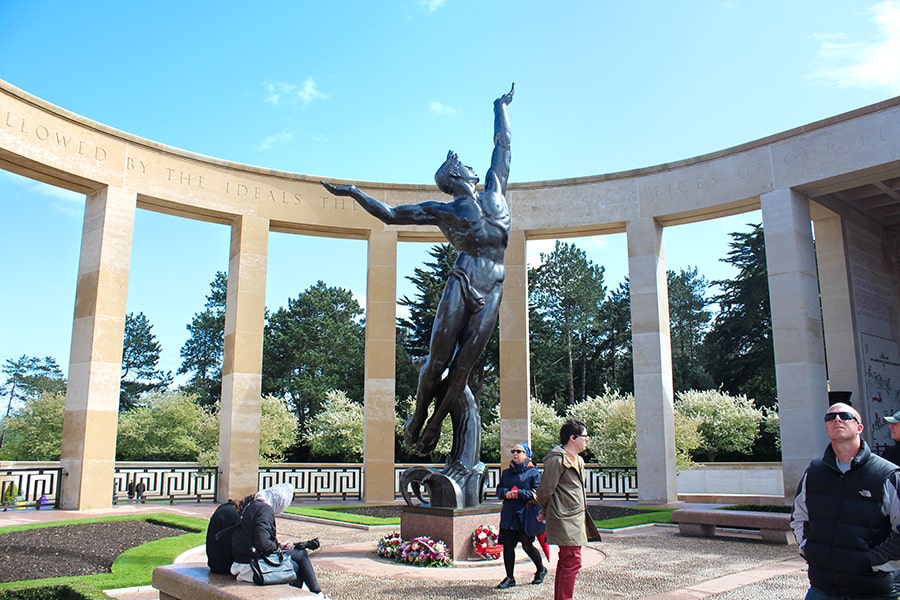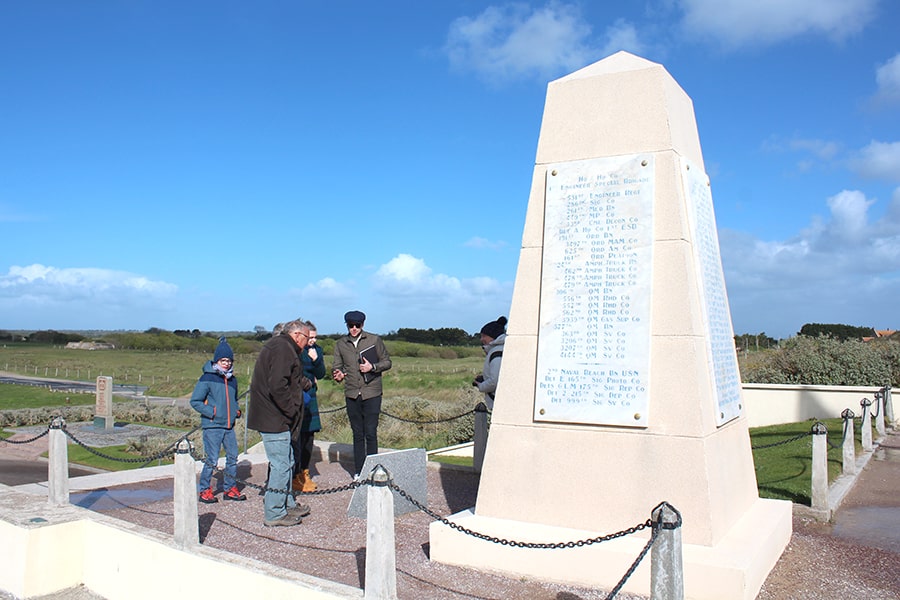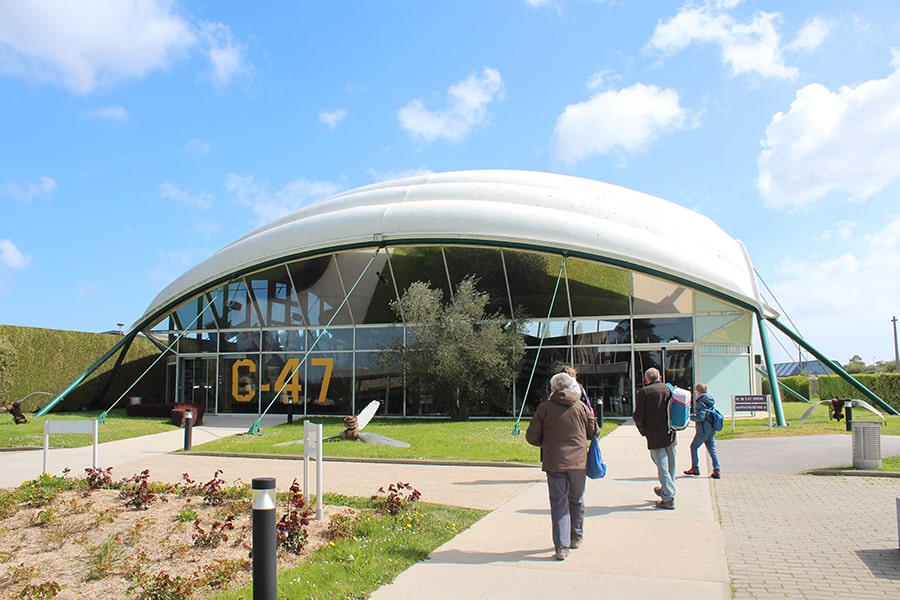D-Day discovery on the beaches of Utah Beach and Omaha Beach
For the 75th anniversary of the Normandy landings, Le Cormoran campsite partnered with the brand new sightseeing tour company “Normandy Discovery Tour” to offer you a special D-Day week-end.
This D-Day package includes (for 4 people) :
A nice gift to win during the contest organized by Manche Tourisme on their Facebook page on March 22th 2019. Many thanks to Latitude Manche and the tourism office of La Baie du Contentin for their support on this project.


Winner of the contest organized by Manche Tourisme
Congratulations to the Remoleux family who won the competition. They won a free week-end in a mobile home at our campsite including a private guided tour for one day on 6th of June 1944 sites. A first time for the family who had never been to Normandy before.
Guided tour on the landing beaches with the guides of Normandy Discovery Tour
D-Day Tour in la Manche and Calvados

Saturday 27th April 2019, here we go for a trip around d-day beaches and historical sites of Normandy landing with the winners of the contest. Departure at 9:30am from the campsite where we meet Thomas Voisin and Flavie Poisson. This 2 young norman guides and D-Day lovers drive us for a guided visit dedicated to the American sector.
The night from 5th to 6th of June 1944, the Overlord operation is launched. It is more than 20 000 men (paratroopers) who will be sent on the French battlefield in a single night, followed the next day by 135 000 extra soldiers.
On every site visited, we discover not only the historical facts which happened, but also the different military strategies put in place, the equipments and weapons from the soldiers who fought and especially the little stories inside the big one. We also discuss the daily life of the norman population during the occupation with the rationing tickets due to shortage, the substitutes they used (Ersatz) and the implementation of a curfew.
Utah Beach, nearby the museum of D-Day landing
We walk on the sand of Utah Beach while the guides describe us the German defence American soldiers were confronted to when they arrived on this coastline. We learn their strategic attack but also their objectives once the beach was overrun: rejoin and bring reinforcement to the Airborne troops which were in the country side.
All the way long we see remains of many blockhaus.

D-Day in Sainte-Mère-Eglise
At the heart of Sainte-Mère-Eglise, the guides bring us by the church place to tell the story of the 6th of June airdrops which took place exactly here. We can see a mannequin of the famous John Steel hanging at the church spire.
Next, we crossed the road just in front to visit the Airborn Museum. This historical museum is made of four buildings and has an actual C47, plane which was used for the airdrops. We walk inside the plane among the soldiers just before the dropping through an immersive path with lights and sound effects. Plenty of historical reenactments and a large collection of weapons and military vehicles make us visualize with details the Second World War.
There are also consumer goods from this period which plunge us into the 40’s, including the ones brought by Americans that Normans saw for the first time (chewing-gum, instant coffee…).

After a lunch break in the village, we go back in the van with the Andrew Sisters’ music to carry on our visit.
The small church of Angoville au Plain
Nearby the D airdrop area, our guides reveal a place less known but yet quite important in the landing history: the church of Angoville-au-Plain. Two airdropped american nurses, Robert E. Wright and Kenneth J. Moore, settled up in the church a war hospital which become a neutral area. Indeed, they delivered health care to every injured soldiers no regards for their nationality. The paratrooper nurses received the Silver Star for their actions. Years later, the stained-glass windows of the church were redesigned to pay tribute to the Americain Airborne troops. Thus, we can observe paratroopers representation as well as the symbol of their unit.

The liberation of Carentan
Strategic crossing point, the liberation of Carentan was long and difficult. Arrived at the entrance of the city Thomas explains to us why this corner is called the “Dead’s man Corner” and the hard “carré de Choux” battle. Indeed, American paratroopers had to fight with bayonets, daggers or with their own fists to take back farms and gardens. The two camps suffered serious losses. Our guides explain to us how gliders were used to provide the battlefield with weapons, vehicles and men.

La pointe du Hoc
Once in the Calvados we visited the German fortifications from La Pointe du Hoc, part of the Atlantique Wall. This strategic place located between Utah and Omaha beach overhang the Manche channel with its 30 meters high. We discover there an artillery battery with its firing post, blockhouses, shelters and cannons.
Our guides give us explanations about the daily life of the germans inside the bunkers but also about the storming of la Pointe du Hoc by the 2nd Ranger of Colonel Rudder on the June 6th 1944.

Omaha Beach
We stop then at Vierville-sur-Mer with Omaha beach ahead. Among all the five landing beaches, this area is the one counting the most losses on the D-Day. This is why it is called “Bloody Omaha”.
The guides tell us the many obstacles soldiers were confronted to at this very spot during the Neptune Operation: favorable morphology of the terrain for Germans, strong defences, a preventive bombing attack causing little damages, military engineers arrived before infantry…
We drive by the first temporary American cemetery of Normandy landings. We continue for a short drive of 7 km towards the American cemetery of Colleville-sur-Mer.

American military graveyard of Colleville sur mer
This place of remembrance gathers the graves of 9 380 soldiers who died during the landing and the days after. It overhangs Omaha beach and expands on 70 hectares. The Walls of the Missing is a semicircular wall with the names of the 1 557 dead soldiers during the events.
Inside the cemetery we visit the Memorial where an impressive bronze statue of 7 m high pays tribute to the American Airborne troops. On the sides, large military operations maps represent the different attacks which were carried out.
The cemetery also have a chapel and a visitors’ centre. Our guides describe us the creation of the cemetery as well as its management by the American Battle Monuments Commission. While we walk along the white crosses they tell us the story of some soldiers who lie in this place.


Back at the campsite
The visit of Colleville finished we go back into the bus toward Ravenoville. On our way back we pass close to Isigny-sur-Mer where we can see from the road the production plant of the famous caramels d’Isigny.
Back to the campsite at 6 pm it is time to enjoy the campsite’s services (bar, pizzeria, swimming pool…) and recover from this busy day full of history and emotions.
How to choose a campsite near Utah Beach?























